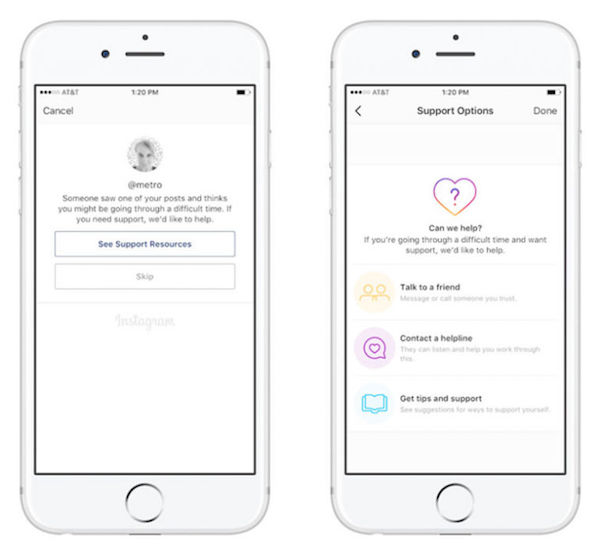The combination of academics, finances, and relationships can strain students’ mental health. A 2013 survey of over 30,000 post-secondary students conducted by the Canadian Organization of University and College Health revealed that 63 per cent of students reported feeling lonely, and 50 per cent of students reported feeling hopeless. Significantly, 9.5 per cent even reported to have had seriously considered taking their own lives.
A recent study at McMaster University found a strong positive correlation between social media use and the development of mental health issues, such as depression and lowered self-esteem, while a 2014 study revealed a causal relationship between Facebook use and decreased mood. In light of such research, in June 2016, Facebook released a set of suicide prevention tools to provide support to its users. Now, Instagram, acquired by Facebook in 2012, has launched a new interactive feature to help combat self-harm and suicide. The function is already available in the United States and will soon be expanding worldwide. Due to the strong positive correlation between mental illness and social media use, it is imperative that Instagram is taking this step.
In Instagram’s new feature, users can flag photos anonymously when they identify someone who seems to be going through a hard time. The Instagram team will then review each flagged photo, and send a notification to the user that reads, “Can we help? Someone saw one of your posts and thinks you might be going through a difficult time. If you need support, we’d like to help.” The user can then directly access three options through the application: They can talk to a friend, contact a helpline, or get tips and support.
Instagram’s self-harm prevention tool has the potential to positively impact users’ mental health. While it is not the responsibility of social media companies to offer solutions to mental health issues, it is in their best interest to do so, as it will facilitate a welcoming and supportive online environment for users. The ability to flag photos acts as a risk management measure: Any possible harm that the feature may introduce is outweighed by its potential to mitigate the negative effects of social media on mental health.
Social networking sites are not the only factor of mental health issues, nor is alleviating mental illness the sole responsibility of social media. Instagram taking voluntary action to ensure the mental health of its users is comparable to if the inventors of the internet were to assist victims of cyberbullying. It’s an ambitious and admirable feat.
Addressing mental health issues through Instagram is a strategic move that has the capacity to raise awareness and provide support for mental health among its more than 500 million active users. Site-specific tools on social networking platforms are important in helping users to navigate their daily experiences.
Instagram’s support message feature is unique as it depends on users’ responses. Rather than relying on an algorithm that flags certain alarming keywords, for example, the photos are flagged on the basis of an individual’s discretion. Mental illness is stigmatized, making it difficult to reach out for help: Approximately half of those with anxiety or depression have not sought help from a doctor. With that in mind, the interactive nature of Instagram’s new feature will make it more likely for peers to reach out to at-risk users.
This novel project is not perfect, as it could potentially trigger those who are already suffering or send messages to users who are not at risk. But the consequences of potential missteps are far less grave than having no such function at all. Furthermore, the risk of a user who is not struggling with mental health issues receiving a “Can we help?” notification and consequently questioning their mental state is mediated: The Instagram team reviews each flag before sending a notification, and has collaborated with organizations such as the National Suicide Prevention Lifeline and the National Eating Disorder Association to ensure the suitable wording for the message. As this feature is integrated, Instagram must continue to assess whether it can be improved and actively seek user feedback.
By introducing an interactive risk management measure that relies on user feedback, Instagram can foster a sense of community among its members while addressing the issue of mental health. It would benefit other social media companies to follow suit and adopt site-specific online tools to combat mental health.









